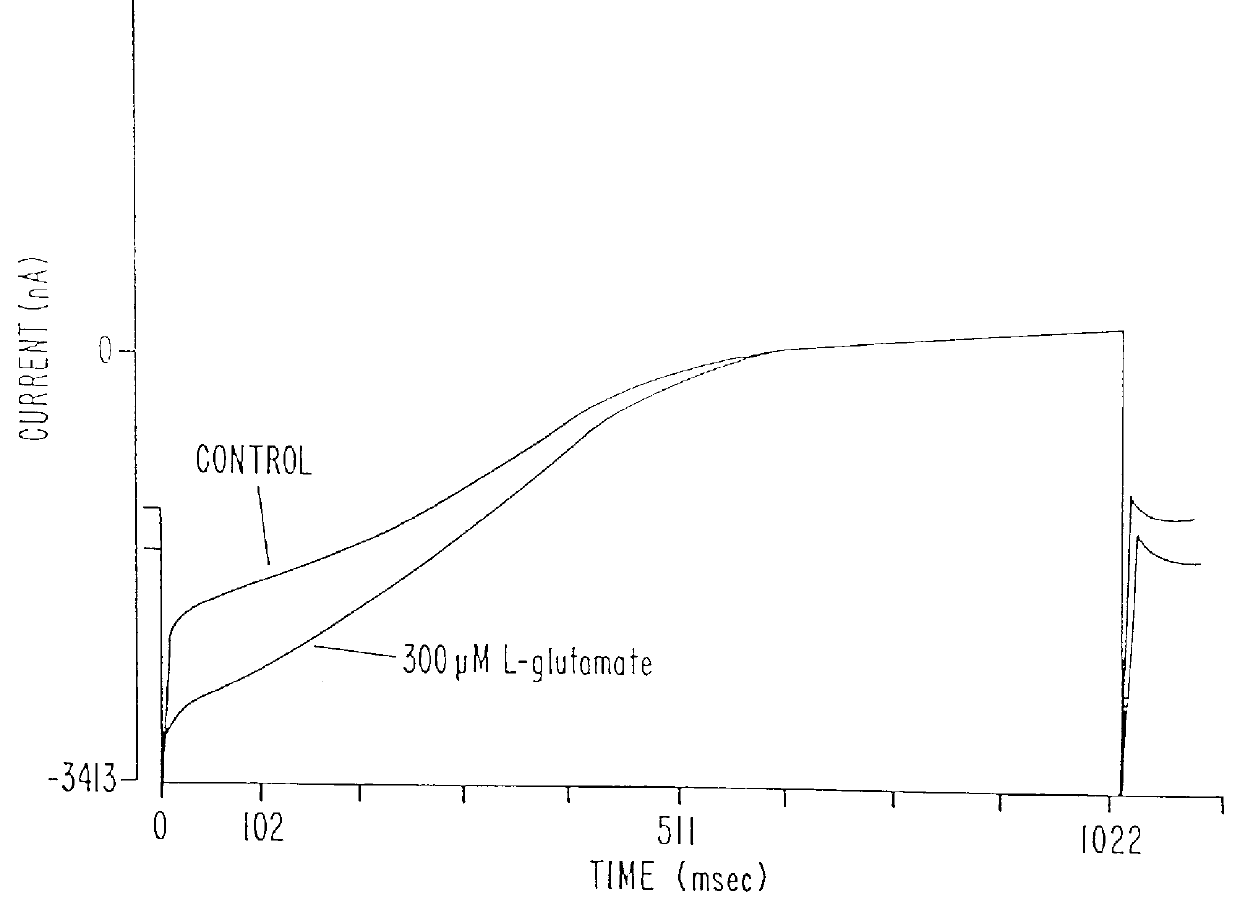Human metabotropic glutamate receptor
- Summary
- Abstract
- Description
- Claims
- Application Information
AI Technical Summary
Benefits of technology
Problems solved by technology
Method used
Image
Examples
example 1
Cloning Inorganic Ion Receptors and Metabotropic Glutamate Receptors by Use of Degenerate Primer PCR
Calcium receptors from bovine and human parathyroid gland; and from rat kidney and brain have been cloned (Brown et al., Nature 366:575, 1993; Garrett et al., J. Biol. Chem. 270:12919, 1995; Riccardi et al., Proc. Natl. Acad Sci. USA 92:131, 1995, Ruat et al., Proc. Natl. Acad Sci. USA 92: 3161, 1995). Analysis of the calcium receptor sequences (bovine, human and rat) by sequence database comparison indicated that while the calcium receptor sequences were unique, they exhibited weak, but significant homology (20-30% amino acid identity) with the metabotropic glutamate receptors (mGluRs). This result indicated that calcium receptors are structurally related to mGluRs and probably evolved from a common ancestral gene. Despite this structural relatedness, calcium receptors are pharmacologically distinct from mGluRs and in experiments with bovine parathyroid cells, or with Xenopus oocytes...
example 2
Cloning of a Novel Human mGluR Sequence
PCR was carried out using human genomic DNA as template and the degenerate primers and reaction conditions indicated in the above example (Abe et al. J. Biol. Chem., 19:13361, 1992). Amplification products were subjected to agarose gel electrophoresis and those corresponding to approximately 500 bp in size were subcloned following digestion with XhoI and EcoRI restriction endonucleases. DNA sequence analysis of the subclones via double-stranded DNA sequencing with Sequenase Version 2.0 (US Biochemical) identified sequences for the human calcium receptor and various human mGluR sequences. Most of the latter were readily identified as the human homologs of known rat mGluRs. However, one subclone was found among those generated from the CL1+CL3 amplification reaction which appeared to be unique. Partial sequence analysis of the clone FF6.175 (see SEQ ID NO: 3) indicated that it exhibited strong homologies to the rat mGluR4, mGluR6 and mGluR7 nucle...
example 3
Construction of pHmGR8b
pCCX-1 DNA was digested with XhoI and XbaI to release a fragment extending from nucleotide 825 in the CCX-1 cDNA to the end of the poly A tail. This fragment (.about.2.5 Kb) was subcloned into the XhoI and XbaI sites of the mammalian expression vector, pcDNA I / Amp (Invitrogen) and the resulting clone named pHmGR8-3'. PCR primers (CCX.6b SEQ I.D. NO.15: 5'-CAT GGG CCC TGA TOG AAG CTT CCA GAA GOT G-3', CCX.9 SEQ I.D. NO. 16: 5'-GAT GAA TCC CGA GCA ATT CGC TCC-3') were synthesized commercially (Midland Certified Reagent Company) and used to amplify a PCR product containing nucleotides -108 to 1184 of the novel human mGluR from approximately 20 ng of pCCX-1 under the PCR conditions described previously for X120.15 PCR product amplification. The resulting 1.3 Kb PCR product was digested with HindIII and EcoRI and subcloned into the corresponding sites of pHmGR8-3' to generate a full length novel human mGluR expression construct. The resulting expression plasmid (pH...
PUM
| Property | Measurement | Unit |
|---|---|---|
| Length | aaaaa | aaaaa |
Abstract
Description
Claims
Application Information
 Login to View More
Login to View More - R&D
- Intellectual Property
- Life Sciences
- Materials
- Tech Scout
- Unparalleled Data Quality
- Higher Quality Content
- 60% Fewer Hallucinations
Browse by: Latest US Patents, China's latest patents, Technical Efficacy Thesaurus, Application Domain, Technology Topic, Popular Technical Reports.
© 2025 PatSnap. All rights reserved.Legal|Privacy policy|Modern Slavery Act Transparency Statement|Sitemap|About US| Contact US: help@patsnap.com



